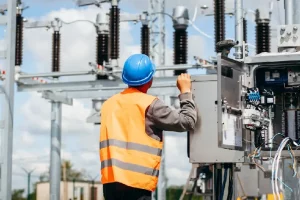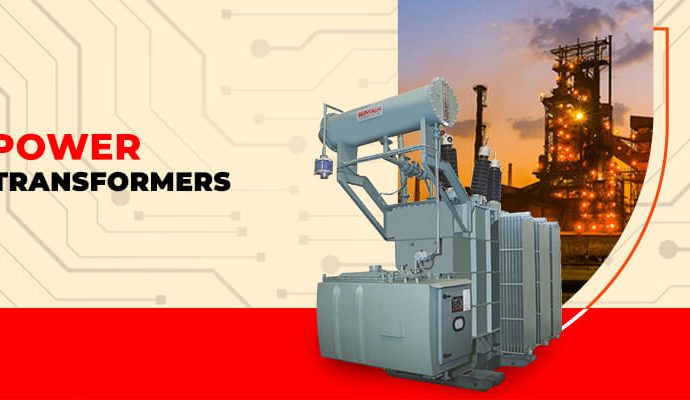Introduction Transformers play a vital role in delivering electricity safely and efficiently. Whether you flip a light switch at home or power a factory machine, a transformer makes sure voltage levels match the need. Transformer manufacturers design and build these crucial devices. They serve utilities, industries, and renewable energy projects around the world. In this
Introduction
Transformers play a vital role in delivering electricity safely and efficiently. Whether you flip a light switch at home or power a factory machine, a transformer makes sure voltage levels match the need. Transformer manufacturers design and build these crucial devices. They serve utilities, industries, and renewable energy projects around the world. In this article, we will explore what transformers are, the main types made by leading electrical transformer companies, and how to pick the right power transformer suppliers. By the end, you’ll understand the market and know how to choose the best manufacturer for your needs.
What Are Electrical Transformers?
An electrical transformer is a device that changes voltage from one level to another. It works on simple magnetic principles. When an electric current flows through a coil, it creates a magnetic field. If that field moves near another coil, it induces a current there. By adjusting coil windings, manufacturers can step voltage up or down. Stepping up voltage helps send power over long distances with less loss. Stepping down voltage makes it safe for homes and offices. Without transformers, our power grids and electronic devices could not function reliably.
Types of Transformers
Transformer manufacturers produce a range of models to serve different purposes:
- Power Transformers: These large units operate at high voltages (above 110 kV). Utilities use them in substations to step up or down grid voltages.
- Distribution Transformers: Smaller than power transformers, these sit on poles or in ground boxes to lower voltage for homes and small businesses.
- Instrument Transformers: Covering current and voltage transformers, they feed precise measurements to meters and safety relays.
- Isolation Transformers: These protect equipment by isolating circuits and reducing noise.
- Auto Transformers: With a single winding, auto transformers are compact and cost-effective for small voltage changes.
Each type meets specific technical standards. Manufacturers choose the right core materials, winding techniques, and insulation to match the application.
Top Global Transformer Manufacturers
Several firms stand out in the competitive transformer market:
- ABB: A Swiss-Swedish company known for power and distribution transformers, plus smart grid solutions.
- Siemens Energy: German-based, offering large power transformers and digital monitoring systems.
- General Electric (GE): U.S. firm with a broad range of transformers and renewable energy integration.
- Toshiba Energy Systems: Japan’s leader in high-capacity transformers for utilities and industry.
- Hitachi Energy: Known for green energy solutions and compact design transformers.
These companies invest heavily in research and development. They use advanced materials like amorphous steel cores and vacuum-pressure impregnation to boost efficiency. Their global presence ensures quick delivery and local support in many regions.
Transformer Manufacturers in India

Image by: Yandex.com
India hosts several strong electrical transformer companies that serve domestic and export markets:
- BHEL (Bharat Heavy Electricals): A state-owned giant making power and distribution transformers up to 765 kV.
- CG Power and Industrial Solutions: Offers a full line of transformers, from distribution to large power units.
- Voltamp Transformers (a Toshiba group company): Specializes in oil-immersed and dry-type transformers.
- Kirloskar Electric Co.: Known for dry-type, cast-resin transformers and custom solutions.
- Larsen & Toubro (L&T): Supplies turnkey transformer projects and factory automation.
These firms follow strict norms from the Bureau of Indian Standards (BIS) and global bodies like IEC. Many have export ties to Asia, Africa, and the Middle East. Their mix of local experience and global partnerships makes them reliable partners for many projects.
Quality Standards and Certifications
When evaluating transformer manufacturers, look for these marks of quality:
- ISO 9001 Certification: Shows commitment to quality management processes.
- IEC 60076 Compliance: International standard covering design and testing of power transformers.
- ANSI Standards: Important if transformers will serve U.S. markets.
- BIS Certification: Ensures products meet India’s safety and performance requirements.
- RoHS and REACH: Indicate compliance with global environmental and material restrictions.
Beyond certifications, ask about factory testing. Factory Acceptance Tests (FAT) and Site Acceptance Tests (SAT) verify performance under real conditions. A reputable manufacturer will share test reports and allow third-party audits.
How to Choose the Right Transformer Manufacturer
Selecting the best power transformer supplier involves more than price. Consider these factors:
- Technical Expertise: Ensure the firm has experience in your voltage range and application.
- Customization: Ask if they can tailor designs for special needs—compact size, special cooling, or marine use.
- Delivery Time: Check lead times and track record for on-time delivery.
- After-Sales Support: Look for local service centers, spare parts stock, and training offerings.
- Warranty and Guarantees: A strong warranty shows confidence in product quality.
Request detailed proposals from multiple suppliers. Compare not just costs but total life-cycle value. A slightly higher upfront price may pay off through higher efficiency, lower losses, and fewer maintenance needs.
Future Trends in Transformer Manufacturing
The transformer industry is evolving with new demands:
- Smart Transformers: Integrated sensors and IoT connectivity help utilities monitor health in real time.
- Eco-Friendly Materials: Research into biodegradable oils and advanced core alloys reduces environmental impact.
- Compact Designs: Urban grids need smaller, silent, and vibration-free units.
- Renewable Integration: Transformers are adapting to handle solar inverters and wind farm outputs.
- 3D Printing: Prototype windings and parts by additive manufacturing speed up design cycles.
These trends promise higher efficiency, lower costs, and greener operations. Manufacturers that embrace smart and sustainable technologies will lead the market in the years ahead.
Conclusion
Choosing the right transformer manufacturer is key to powering homes, industries, and renewable projects. From global giants like ABB and Siemens to India’s own BHEL and CG Power, each company brings unique strengths. Understand the types of transformers available, check for quality certifications, and compare life-cycle costs, not just prices. Look for partners who offer smart features and eco-friendly options. By doing your homework and focusing on total value, you ensure safe, reliable power for years to come. Trust in top suppliers and enjoy worry-free energy delivery worldwide.
















